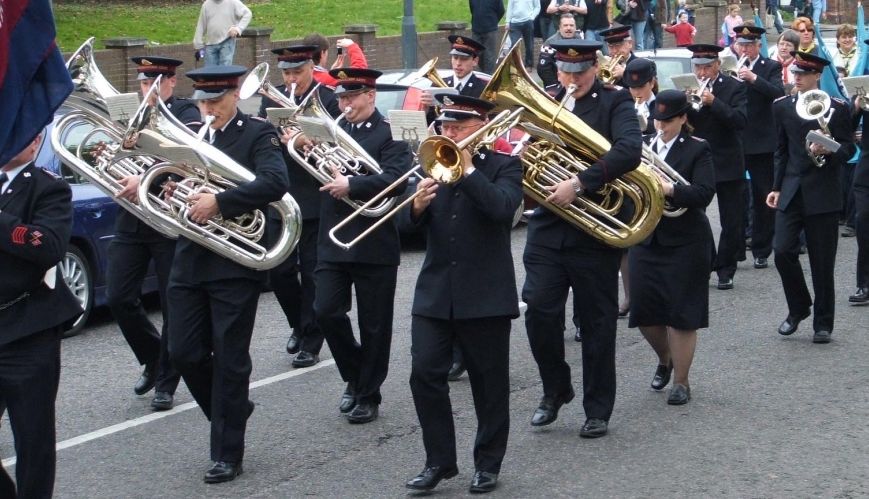A new look at the good ol' days

A new look at the good ol' days
13 November 2019
A Salvation Army brass band marching down the street still holds an affectionate place in public memory.
The following article is an explanation by Major Samantha Johnson of her BA (Honours) Pastoral Care with Psychology dissertation, which asked ‘How can a knowledge of nostalgia inform the transition to a contemporary worship experience?’
Nostalgia in worship is not new.
Psalm 137:4 expresses the yearning of exiled Hebrews who were unable to sing “in a foreign land” and Psalm 63:1-2 recalls worship “in the sanctuary” while longing for God in a “dry and parched land”. Both refer to a sense of uneasiness within a new setting.
Every generation experiences conflict between a need for progress and a desire to hold on to the past. I formed my dissertation question by examining aspects of Salvation Army identity alongside traditional and contemporary elements of worship.
Excessive nostalgia was regarded for centuries as the “disease of unhealthy longing for bygone days”, according to Svetlana Boym in The Future Of Nostalgia.
Ecclesiastes 7:10 appears to affirm this: “Do not say, ‘Why were the old days better than these?’ For it is not wise to ask such questions.”
In times of rapid transition, when fear of new experiences produces cultural conflict, nostalgia for a known and safe past is understandable.
Psychological research generally shows, though, that nostalgia is more than simply a sentimental yearning for the past and is actually a demonstration of a more profound experience.
Bonnets, brass bands on street corners and the ever-important Army cup of tea dispensed ‘during the war’ hold an affectionate place in public memory.
While we still distribute plenty of tea, this nostalgic portrayal of the Army is less of a reality as we embrace contemporary worship styles, changes in mission strategy and practical working uniforms.
Within the Army, too, there is nostalgia for the old days and old ways, with questions asked about why methods that worked then are not applied today.
To help understand the experience of personal and collective nostalgia, I felt it would be beneficial to apply current psychological research to the context of the Army.
I hoped that understanding the thoughts and beliefs associated with nostalgia might strengthen pastoral care for those who find transition difficult and would provide greater insight into why some people struggle with more modern components of worship.
I began by reading psychology papers to identify current thinking about nostalgia. To explore it in context, I initially distributed questionnaires among small groups of Salvationists in various corps and subsequently interviewed certain individuals based on their questionnaire responses.
I wanted to measure the extent of nostalgia and its triggers in relation to worship and Army practice, so included questions about musical styles and sections, new songs versus old, Bible translations, spiritual experiences during worship and Salvationist identity.
I also encouraged general comments to provide further insight. I had a good balance of gender and age among participants, with approximately half being lifelong Salvationists.
Only 20 per cent of participants felt their corps was growing, which might have suggested that nostalgia was a response to existential threat, but this turned out not to be the case.
Generally, modern worship styles were viewed as positive; new songs were not seen as a cause of discomfort but rather a source of frustration when they could not be sung confidently or comfortably together.
Participants were not especially opposed to change and progress but disliked the awkwardness of unfamiliarity. Elements that did emerge as important during worship were social connectedness, personal and collective identity and psychological wellbeing.
Psychological research has identified that nostalgia frequently connects people with their formative years of adolescence and early adulthood.
This was confirmed by my interviews, during which participants fondly recalled their experiences of fellowship and commitment in youth and wished for them to be replicated in the Army today.
The significant role of mentors and a sense of meaningful activity were important factors in their responses. My conclusion was that nostalgia within the Army does not suggest a desire to live in the past or a refusal to embrace the future.
It is better understood as an aid to maintain identity during transition, a reflective approach to establish meaning and purpose through the stages of life.
Nostalgia associated with worship can provide a deeply profound encounter, as one views past and present identity in relation to God.
Meaning affirmed by past experiences may provide a resource to ease the spiritual challenges of the present and contribute to faith for the future.
The pastoral response, therefore, is to ensure that an individual’s nostalgia is not dismissed but recognised as a valid indicator of purpose and identity.
A person’s experience of transition can be enhanced by actively encouraging bouts of nostalgia and the building of relationships.
The challenge is to balance the nostalgia of older generations with the creation of a contemporary worship experience that adolescents and young adults can look back on nostalgically in the future.
Samantha Johnson is the Corps Officer at Oxford in England.